Out on stormy weekends for a picnic at the beach? Maybe spend the night in the rain in the foothills? Or getting drenched while hiking in your favorite river valley? Don’t let the humidity make you unhappy. Picnics in the constant rain can still be quite fun if you keep yourself dry. Here are 10 tips to have a picnic in extremely wet weather conditions.
1. Remember to bring rain gear.
Medium-weight tights and long-sleeve shirts are the simplest, most comfortable, and least-obstructive undergarments to wear underneath stiff fabric. You should look for clothing that covers the entire area to keep the jacket from rubbing against your skin, and you can stretch your arms and legs comfortably. On short trips when the weather is wet, you can completely skip the traditional pants used for hiking (hiking), only wearing tight pants and hard shells.
2. Look for sturdy, breathable fabric jackets and pants.
During long trips with continuous rain, the outer layer of the hard fabric jacket inevitably gets wet. This greatly reduces the breathability of the garment. The side zips will never let you down and they will make hiking much more comfortable.
3. Wear only synthetic and fleece thermal clothing.
In wet weather, a synthetic or fleece mid-layer maintains warmth and retains volume even in humid weather.
4. Waterproof for a backpack.
Of course, it’s a good idea to store moisture-sensitive items in a dry bag, zippered bag, or trash bag, but waterproofing your backpack will still help protect it from the outside. Fully waterproof backpacks are by far the best choice, but they are often very expensive. You can also waterproof your backpack to the same effect, albeit a little more complicated, with a pack cover.
Also, remember: A wet backpack will also weigh more.
5. Open the backpack as little as possible.
Every time you open your backpack or take off your backpack raincoat, rainwater will fall on the backpack. This dampness builds up for the rest of the ride. To minimize that, store all frequently used snacks and knick-knacks in your shirt pocket, pants pocket or the outside of your backpack.
6. Keep the map in a zippered plastic bag.
Many maps are waterproof. But if yours doesn’t have one, be sure to keep the map in a plastic bag so it won’t be affected by rain whenever you use it.
7. Hiking shoes with leggings are great for short trips.
Especially if you wear leggings under hard fabric pants, the effect will increase, this combination helps to seal the gap between pants and shoes, preventing rainwater from entering.
8. For longer rides, wear breathable trail running shoes.
Otherwise, your feet will get wet. Even the best walking shoes, leggings, and pants can’t stop the sweat or the lingering, inevitable wetness of a long walk in the rain, especially if you have to wade across a river. across the stream. At this time, a pair of trail running shoes will be a wise choice for you. Since they are softer and more breathable than regular shoes, they minimize the risk of blisters due to the tough leather material that dries quickly in between showers. Another plus is that they help your feet move significantly easier.
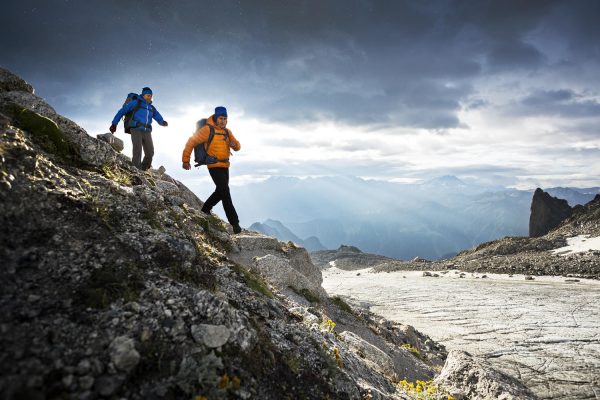
9. Pay more attention to the prevention and treatment of blisters.
Wet socks quickly strip your skin of its natural oils, leading to more water absorption, wrinkling, and a higher chance of blistering, especially if you’re wearing stiff shoes. To help prevent this, replenish the skin’s natural oils with wax or ointments from reputable brands and prepare a bandage.
10. Leave wet items outside the tent.
Backpacks, shoes, coats, socks, wet hats, or any other wet items should be left under the awning, not in the tent. Leaving wet clothes in the tent leads to wet sleeping bags, leaving campers cold and uncomfortable. Ventilation, rigidity and plenty of space are the three ideal characteristics of a tent for use in humid weather.

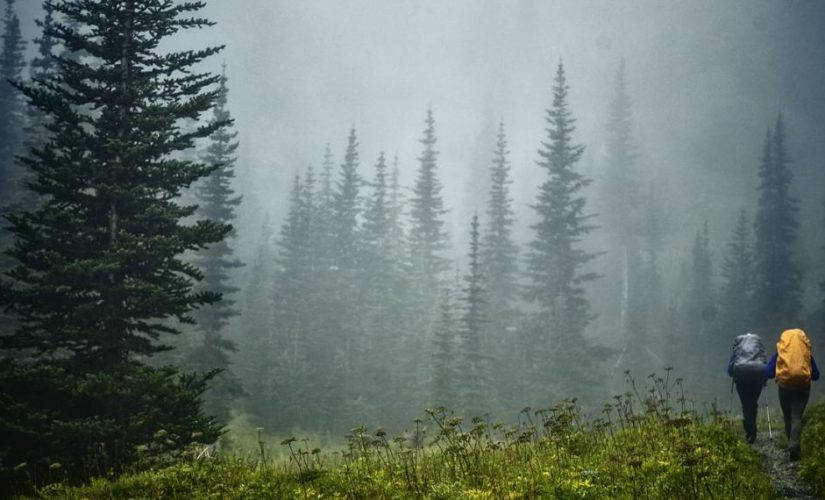
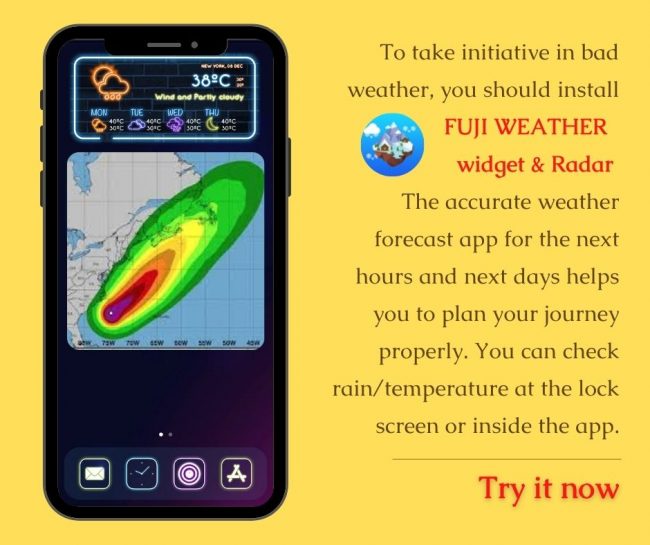

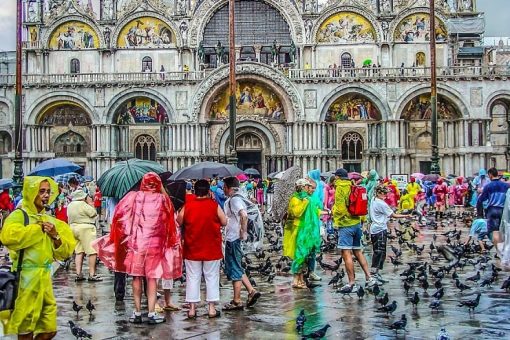
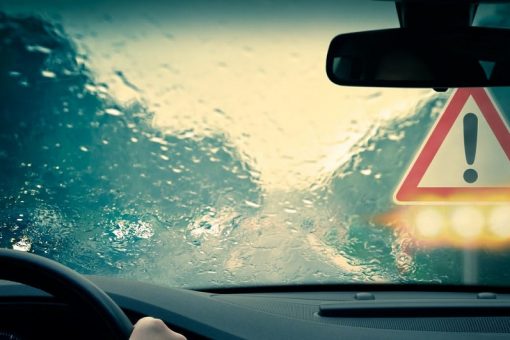
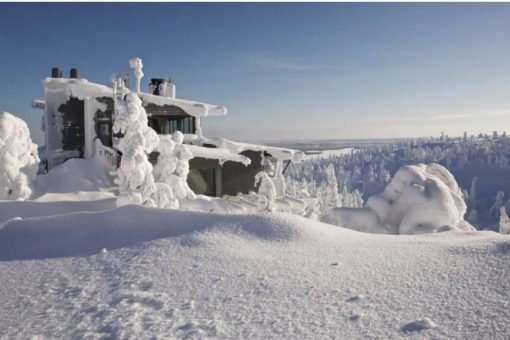
I like the efforts you have put in this, regards for all the great content.
This is my first time pay a quick visit at here and i am really happy to read everthing at one place
Great information shared.. really enjoyed reading this post thank you author for sharing this post .. appreciated
I just like the helpful information you provide in your articles
I’m often to blogging and i really appreciate your content. The article has actually peaks my interest. I’m going to bookmark your web site and maintain checking for brand spanking new information.
very informative articles or reviews at this time.
Türkiye’nin en büyük ve en çok sevilen e-ticaret sitesine hoş geldiniz! Türkiye’de online alışverişin en güçlü ismiyiz. Kurduğumuz hayaller ve ulaştığımız hedeflerle bugünlere ulaştık. Online alışverişi geliştirdik, hizmet anlayışımızla fark yarattık. Usta Nalbur Endüstriyel pazaryeri modeliyle binlerce ürün ve mağazayı milyonlarca müşteriyle buluşturmayı hedefleyerek hayata geçirdi. Hırdavat
Nice post. I learn something totally new and challenging on websites
tiktok free coins ?? tiktok coins hack ?? how to get tiktok coins free unlimited amount
I just like the helpful information you provide in your articles
I appreciate you sharing this blog post. Thanks Again. Cool.
This is my first time pay a quick visit at here and i am really happy to read everthing at one place
Awesome! Its genuinely remarkable post, I have got much clear idea regarding from this post
naturally like your web site however you need to take a look at the spelling on several of your posts. A number of them are rife with spelling problems and I find it very bothersome to tell the truth on the other hand I will surely come again again.
I just like the helpful information you provide in your articles
sosyal medya günümüzde işletmeler için oldukça önemli bir araç haline geldi. İşletmeler, ürünlerini ve hizmetlerini tanıtmak, müşterilerle etkileşim kurmak ve pazarlarını genişletmek için aktif bir şekilde sosyal medyayı kullanıyorlar. Bu nedenle, takipçi sayısı ve etkileşim düzeyi işletmeler için oldukça önemlidir.
I really like reading through a post that can make men and women think. Also, thank you for allowing me to comment!
Prolisans.com, güvenilir ve yetkili bir satış kanalı olarak Windows 11 Pro Retail lisansını sizlere sunmaktadır. Orijinal ürün garantisiyle, işletim sistemi deneyiminizi en yüksek kalitede yaşayabilirsiniz. Sınırlı sayıdaki lisanslarla sınırlı süreli bir teklif, şimdi Prolisans.com’u ziyaret ederek Windows 11 Pro’nun ayrıcalıklarını keşfedin! Müşteri memnuniyetine önem veren profesyonel ekibimizle sizlere en iyi hizmeti sunmaktan mutluluk duyarız.
I truly appreciate your technique of writing a blog. I added it to my bookmark site list and will
I do not even understand how I ended up here, but I assumed this publish used to be great
Hi there to all, for the reason that I am genuinely keen of reading this website’s post to be updated on a regular basis. It carries pleasant stuff.
I am truly thankful to the owner of this web site who has shared this fantastic piece of writing at at this place.
I truly appreciate your technique of writing a blog. I added it to my bookmark site list and will
You’re so awesome! I don’t believe I have read a single thing like that before. So great to find someone with some original thoughts on this topic. Really.. thank you for starting this up. This website is something that is needed on the internet, someone with a little originality!
Awesome! Its genuinely remarkable post, I have got much clear idea regarding from this post
İşlerini her zaman samimi ve güvenilir bir şekilde gerçekleştiren ve bunu müşteriye daima yansıtan bir firmadır. Çelik konstrüksiyon proje ve desteklerinden dolayı teşekkür ederim.
شراء آلة لحام البولي ايثيلين
KORAY.FİRAT@HOTMAİL.COM
I very delighted to find this internet site on bing, just what I was searching for as well saved to fav
تجهيزات إمدادات المياه البولي ايثيلين
I very delighted to find this internet site on bing, just what I was searching for as well saved to fav
very informative articles or reviews at this time.
This is really interesting, You’re a very skilled blogger. I’ve joined your feed and look forward to seeking more of your magnificent post. Also, I’ve shared your site in my social networks!
Good post! We will be linking to this particularly great post on our site. Keep up the great writing
Awesome! Its genuinely remarkable post, I have got much clear idea regarding from this post
Belçika Medyum Yıldız Hoca Kimdir? Merhaba değerli dostlarım sizlere kısaca kendimden biraz bahsetmek isterim, 1967 Adıyaman Menzilde Hüseyin Efendinin oğlu olarak dünyaya geldim birden fazla medreselerde eğitim aldım, sizlerin tabiri ile çiğitten yetişme bir geçmişim oldu, aldığım eğitimler arasında ise vefk ilmi, hüddam ilmi, havas ilmi, ledun ilmi gibi sahip olduğum ilimler mevcuttur.
I am truly thankful to the owner of this web site who has shared this fantastic piece of writing at at this place.
You’re so awesome! I don’t believe I have read a single thing like that before. So great to find someone with some original thoughts on this topic. Really.. thank you for starting this up. This website is something that is needed on the internet, someone with a little originality!
Hi there to all, for the reason that I am genuinely keen of reading this website’s post to be updated on a regular basis. It carries pleasant stuff.
I do not even understand how I ended up here, but I assumed this publish used to be great
I wanted to express my appreciation for your exceptional work. This post has been incredibly helpful, and I’ve gained a lot of knowledge from it. Thank you for your dedication to producing high-quality content!
The author’s writing style is engaging and easy to follow. It makes the content enjoyable to read.
Office 2021 Pro Plus, iş dünyasının ihtiyaçlarına yönelik olarak geliştirilen en son ofis üretkenlik paketidir. Güçlü özellikleri ve kullanım kolaylığıyla, işletmelerin ve profesyonellerin verimliliklerini artırmalarına yardımcı olur.
Office 2021 Pro Plus, iş dünyasının ihtiyaçlarına yönelik olarak geliştirilen en son ofis üretkenlik paketidir. Güçlü özellikleri ve kullanım kolaylığıyla, işletmelerin ve profesyonellerin verimliliklerini artırmalarına yardımcı olur.
Awesome! Its genuinely remarkable post, I have got much clear idea regarding from this post
I really like reading through a post that can make men and women think. Also, thank you for allowing me to comment!
Merhaba! https://www.pttavm.com/magaza/lisanson adresinde sizlere Office 2021 Pro Plus’u tanıtmaktan mutluluk duyuyoruz. İş hayatınızı daha verimli ve etkili bir şekilde yönetmek için ihtiyaç duyduğunuz tüm araçları sunan Office 2021 Pro Plus, profesyonel kullanıcılar için ideal bir seçenektir.
Well done, I appreciate the effort you put into this.
There is definately a lot to find out about this subject. I like all the points you made
This was beautiful Admin. Thank you for your reflections.
I’m often to blogging and i really appreciate your content. The article has actually peaks my interest. I’m going to bookmark your web site and maintain checking for brand spanking new information.
DN 500 ASTM A106 Coated Steel Pipe CSA Z245.21 3L PE Coating Bevelled End
Reading this blog was an absolute delight. It was like taking a trip down memory lane, with its detailed and informative content about farming classifieds. The blog was so comprehensive that it covered everything from the history of farming classifieds to the present day trends. The author did a great job of making the content interesting and engaging, while also providing useful information for those interested in farming classifieds. I found the blog to be both educational and entertaining, and I’m sure others will too. Who knew that reading about farming classifieds could be so much fun? Well, I certainly enjoyed this read!
Reading this blog was an absolute pleasure! It was filled with so much interesting information about farming classifieds that I almost felt like I was living in a rural area myself. From the basics of how to post an ad on a classifieds website, to the more complex topics like how to evaluate potential buyers, this blog was an absolute gold mine of knowledge. I especially enjoyed the humorous anecdotes sprinkled throughout the blog, which made the reading experience even more enjoyable. All in all, I highly recommend this blog to anyone looking to learn more about farming classifieds. It’s sure to be a great read!
Awesome! Its genuinely remarkable post, I have got much clear idea regarding from this post
This is really interesting, You’re a very skilled blogger. I’ve joined your feed and look forward to seeking more of your magnificent post. Also, I’ve shared your site in my social networks!
Pretty! This has been a really wonderful post. Many thanks for providing these details.
As I traverse the digital landscape, this website stands out as a shining star of intellectual excellence. The administrator’s dedication to delivering high-quality content that informs, challenges, and inspires is truly commendable. Each article is a carefully crafted masterpiece, meticulously researched and eloquently presented. I find myself drawn into a world of profound insights and diverse perspectives, guided by the administrator’s deep knowledge and passion for the subject matter. This website has become my intellectual sanctuary, a place where I can expand my understanding, question assumptions, and engage in meaningful discussions. I am grateful for the administrator’s unwavering commitment to providing a platform that nurtures curiosity, fosters critical thinking, and cultivates a love for lifelong learning.
Wow, this is a great website! The layout is user-friendly and visually appealing. I found your post really helpful, thank you for sharing such valuable information!”
This is really interesting, You’re a very skilled blogger. I’ve joined your feed and look forward to seeking more of your magnificent post. Also, I’ve shared your site in my social networks!
I am truly thankful to the owner of this web site who has shared this fantastic piece of writing at at this place.
This is my first time pay a quick visit at here and i am really happy to read everthing at one place
Expanding your business internationally demands a specialized understanding of diverse markets, languages, and cultural nuances. An esteemed international SEO service provider possesses the expertise to develop and implement comprehensive strategies that resonate with global target audiences. They conduct thorough market research to identify lucrative keywords, analyze search behaviors in different regions, and create customized SEO campaigns aligned with your business objectives. By leveraging their strategic expertise, you can enhance your online visibility and attract highly targeted organic traffic from international markets.
I’m often to blogging and i really appreciate your content. The article has actually peaks my interest. I’m going to bookmark your web site and maintain checking for brand spanking new information.
I do not even understand how I ended up here, but I assumed this publish used to be great
I’m really grateful for this post. It’s clear that you’ve put a lot of effort into providing comprehensive information. It has provided me with new insights and a fresh perspective. Your dedication to sharing valuable content is commendable. Thank you for your work!
Brilliant post, I couldn’t agree more!
This website is a haven for knowledge seekers, a place where intellectual curiosity is nurtured and celebrated. The administrator’s dedication to providing valuable and engaging content is truly remarkable. With each visit, I am greeted by thought-provoking articles that challenge my assumptions and broaden my perspectives. The administrator’s ability to distill complex ideas into accessible and relatable insights is commendable, making learning a joyous and enlightening experience. This website has become my go-to destination for reliable information and a source of inspiration for my own intellectual pursuits. I am immensely grateful for the administrator’s unwavering commitment to creating a platform that fosters intellectual growth, encourages critical thinking, and inspires a love for lifelong learning.
Hi there to all, for the reason that I am genuinely keen of reading this website’s post to be updated on a regular basis. It carries pleasant stuff.
لان موقعنا حقيقي و البنات داخل الموقع حقيقين.. و لا داعي للبحث اكثر للحصول ع ارقام البنات او ارقام بنات واتساب.. كل هادا موجودداخل الشات
Good post! We will be linking to this particularly great post on our site. Keep up the great writing
Después de leer este artículo, me doy cuenta de la profundidad y el alcance de su conocimiento sobre el tema. Está lleno de información útil y práctica, presentada de manera clara y accesible. Me ha ayudado mucho en mi investigación y estoy agradecido por ello.
Awesome! Its genuinely remarkable post, I have got much clear idea regarding from this post
This post has exceeded my expectations. Thank you for going above and beyond.
I really like reading through a post that can make men and women think. Also, thank you for allowing me to comment!
This is really interesting, You’re a very skilled blogger. I’ve joined your feed and look forward to seeking more of your magnificent post. Also, I’ve shared your site in my social networks!
The Reliability and Performance of Godysms as the Best SMS Website
I am truly thankful to the owner of this web site who has shared this fantastic piece of writing at at this place.
Great information shared.. really enjoyed reading this post thank you author for sharing this post .. appreciated
There is definately a lot to find out about this subject. I like all the points you made
çok bilgilendirici bir yazı olmuş ellerinize sağlık teşekkür ederim
As an avid seeker of knowledge, I have explored countless websites in search of valuable content, but none have captivated me quite like this one. The administrator’s dedication to delivering exceptional quality shines through in every aspect of this website. From the meticulously researched articles to the engaging writing style, each post is a testament to their passion for sharing knowledge. What sets this website apart is its ability to foster a sense of connection and community. The comments section serves as a platform for insightful discussions, where readers can engage in thought-provoking conversations and learn from one another. It is inspiring to be part of such a vibrant community, where intellectual growth and mutual respect are cherished. I am immensely grateful for the administrator’s commitment to creating an enriching environment and providing a space for the exchange of ideas.
Gerçekten detaylı ve güzel anlatım olmuş, Elinize sağlık hocam.
Yazınız için teşekkürler. Bu bilgiler ışığında nice insanlar bilgilenmiş olacaktır.
This is really interesting, You’re a very skilled blogger. I’ve joined your feed and look forward to seeking more of your magnificent post. Also, I’ve shared your site in my social networks!
I very delighted to find this internet site on bing, just what I was searching for as well saved to fav
I just like the helpful information you provide in your articles
farkedilmeyen kamera
I’m impressed by the thoroughness of the information.
Your blog is like a cup of hot cocoa on a chilly day—comforting and delightful. I appreciate the warmth and coziness your writing exudes. Thank you for creating a welcoming space.
This is really interesting, You’re a very skilled blogger. I’ve joined your feed and look forward to seeking more of your magnificent post. Also, I’ve shared your site in my social networks!
Hi there to all, for the reason that I am genuinely keen of reading this website’s post to be updated on a regular basis. It carries pleasant stuff.
There is definately a lot to find out about this subject. I like all the points you made
You’re so awesome! I don’t believe I have read a single thing like that before. So great to find someone with some original thoughts on this topic. Really.. thank you for starting this up. This website is something that is needed on the internet, someone with a little originality!
Çok işime yaradı bende bunu nasıl yapacağımı araştırıyorum. Paylaşım için teşekkür ederim.
naturally like your web site however you need to take a look at the spelling on several of your posts. A number of them are rife with spelling problems and I find it very bothersome to tell the truth on the other hand I will surely come again again.
I just like the helpful information you provide in your articles
Your blog has helped me see [topic] from a different perspective. I appreciate the thought-provoking insights you provide and the fresh ideas you bring to the table. Thank you for expanding my horizons.
naturally like your web site however you need to take a look at the spelling on several of your posts. A number of them are rife with spelling problems and I find it very bothersome to tell the truth on the other hand I will surely come again again.
VIP Transfer Punta Cana offers a safe, reliable and private experience. Our professional and friendly drivers are certified, bilingual and have experience in the area. They provide dominican airport transfer service and always arrive on time. We offer the best prices and always strive to provide the best customer service. Additionally, our vehicles are modern, comfortable and well-maintained, so you can enjoy a smooth, stress-free ride.
very informative articles or reviews at this time.
I very delighted to find this internet site on bing, just what I was searching for as well saved to fav
Architekt Grundriss: Lassen Sie einen Architekten einen maßgeschneiderten Grundriss für Ihr Projekt entwerfen.
InfoMídia ZAP TURBO é a solução perfeita para quem deseja automatizar e potencializar suas estratégias de marketing no WhatsApp. Recomendo de olhos fechados! 👍
Me ha impresionado la gran cantidad de contenido de alta calidad que tienen en su página. Cada artículo es una mina de información y he aprendido mucho de ellos. Agradezco su dedicación para proporcionar contenido que realmente educa e informa.
The customer service team at AIR RISE INC was extremely helpful in resolving an issue I had with my order from airriseinc.com, and I had a similar positive experience with istore.airriseinc.com. https://airriseinc.com/ https://istore.airriseinc.com/
Hi there to all, for the reason that I am genuinely keen of reading this website’s post to be updated on a regular basis. It carries pleasant stuff.
Nice post. I learn something totally new and challenging on websites
very informative articles or reviews at this time.
La diversidad de su contenido es refrescante y muy apreciada. Independientemente del tema, siempre estoy seguro de que encontraré contenido informativo y bien investigado aquí.
This website is a gateway to intellectual enlightenment, offering a wealth of meticulously crafted articles that expand our understanding of the world. The administrator’s dedication to curating thought-provoking and insightful content is truly admirable. With each visit, I am greeted by a treasure trove of knowledge, carefully researched and expertly presented. The administrator’s ability to distill complex ideas into accessible and engaging narratives is exceptional. I find myself captivated by the depth of analysis and the fresh perspectives shared on this platform. This website has become a trusted companion on my journey of intellectual growth and discovery. I am grateful to the administrator for their unwavering commitment to delivering exceptional content that ignites curiosity, challenges assumptions, and broadens horizons.
very informative articles or reviews at this time.
I’m often to blogging and i really appreciate your content. The article has actually peaks my interest. I’m going to bookmark your web site and maintain checking for brand spanking new information.
Great information shared.. really enjoyed reading this post thank you author for sharing this post .. appreciated
Great information shared.. really enjoyed reading this post thank you author for sharing this post .. appreciated
Great information shared.. really enjoyed reading this post thank you author for sharing this post .. appreciated
Your post is a true gem! It’s packed with useful information, and I appreciate the practical tips you’ve included. Thank you for creating such a valuable resource!
You’re so awesome! I don’t believe I have read a single thing like that before. So great to find someone with some original thoughts on this topic. Really.. thank you for starting this up. This website is something that is needed on the internet, someone with a little originality!
I do not even understand how I ended up here, but I assumed this publish used to be great
Bu güzel bilgilendirmeler için teşekkür ederim.
Su producto es la combinación perfecta de innovación y practicidad. La creatividad y la atención a los detalles son evidentes en todas sus características y funciones. Me complace ver que se están rompiendo barreras en su campo.
Your post is a true gem! It’s packed with useful information, and I appreciate the practical tips you’ve included. Thank you for creating such a valuable resource!
Takipteyim kaliteli ve güzel bir içerik olmuş dostum.
You’re so awesome! I don’t believe I have read a single thing like that before. So great to find someone with some original thoughts on this topic. Really.. thank you for starting this up. This website is something that is needed on the internet, someone with a little originality!
KORAY.FİRAT@HOTMAİL.COM
Gerçekten detaylı ve güzel anlatım olmuş, Elinize sağlık hocam.
Porno meme am göt yala izle
Hi there to all, for the reason that I am genuinely keen of reading this website’s post to be updated on a regular basis. It carries pleasant stuff.
Kıllı göt yalayan koray fırat koray.firat@gmail.com
Com o InfoMídia ZAP TURBO, minhas campanhas de marketing no WhatsApp se tornaram mais eficientes e lucrativas. Sensacional! 🚀
Reviva a era dourada das redes sociais! Acesse https://orkut.space e volte ao Orkut Space. 🌟
Bu güzel bilgilendirmeler için teşekkür ederim.
For the reason that the admin of this site is working, no uncertainty very quickly it will be renowned, due to its quality contents.
I just like the helpful information you provide in your articles
I’m often to blogging and i really appreciate your content. The article has actually peaks my interest. I’m going to bookmark your web site and maintain checking for brand spanking new information.
very informative articles or reviews at this time.
This is my first time pay a quick visit at here and i am really happy to read everthing at one place
I do not even understand how I ended up here, but I assumed this publish used to be great
kariyer kıbrıs, kariyer kibris, kariyerkıbrıs, kariyerkibris
very informative articles or reviews at this time.
naturally like your web site however you need to take a look at the spelling on several of your posts. A number of them are rife with spelling problems and I find it very bothersome to tell the truth on the other hand I will surely come again again.
You’re so awesome! I don’t believe I have read a single thing like that before. So great to find someone with some original thoughts on this topic. Really.. thank you for starting this up. This website is something that is needed on the internet, someone with a little originality!
There is definately a lot to find out about this subject. I like all the points you made
Very well presented. Every quote was awesome and thanks for sharing the content. Keep sharing and keep motivating others.
Useful article, thank you. Top article, very helpful.
Awesome! Its genuinely remarkable post, I have got much clear idea regarding from this post
Nice post. I learn something totally new and challenging on websites
Wow, this is a great website! The layout is user-friendly and visually appealing. I found your post really helpful, thank you for sharing such valuable information!”
I do not even understand how I ended up here, but I assumed this publish used to be great
teknolojikıbrıs,teknolojikibris,kibristeknoloji,kıbrısteknoloji
I am truly thankful to the owner of this web site who has shared this fantastic piece of writing at at this place.
Your post is a goldmine of information! It’s evident that a lot of research and effort went into creating this valuable resource. Great job!
Great information shared.. really enjoyed reading this post thank you author for sharing this post .. appreciated
I appreciate you sharing this blog post. Thanks Again. Cool.
naturally like your web site however you need to take a look at the spelling on several of your posts. A number of them are rife with spelling problems and I find it very bothersome to tell the truth on the other hand I will surely come again again.
Awesome! Its genuinely remarkable post, I have got much clear idea regarding from this post
Makaleniz açıklayıcı yararlı anlaşılır olmuş ellerinize sağlık
Takipteyim kaliteli ve güzel bir içerik olmuş dostum.
kariyer kıbrıs, kariyer kibris, kariyerkıbrıs, kariyerkibris
This is my first time pay a quick visit at here and i am really happy to read everthing at one place
Emeğinize sağlık, bilgilendirmeler için teşekkür ederim.